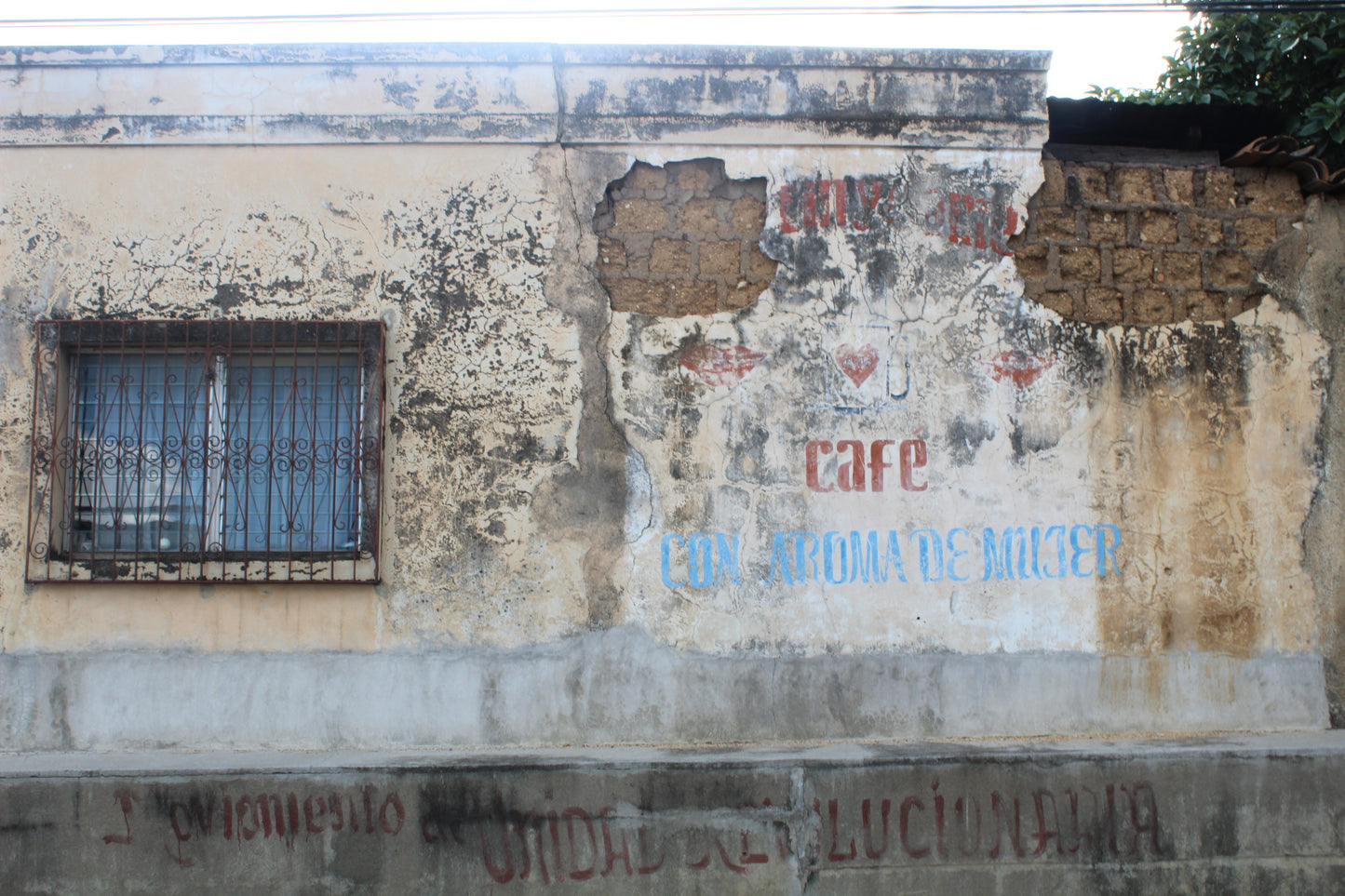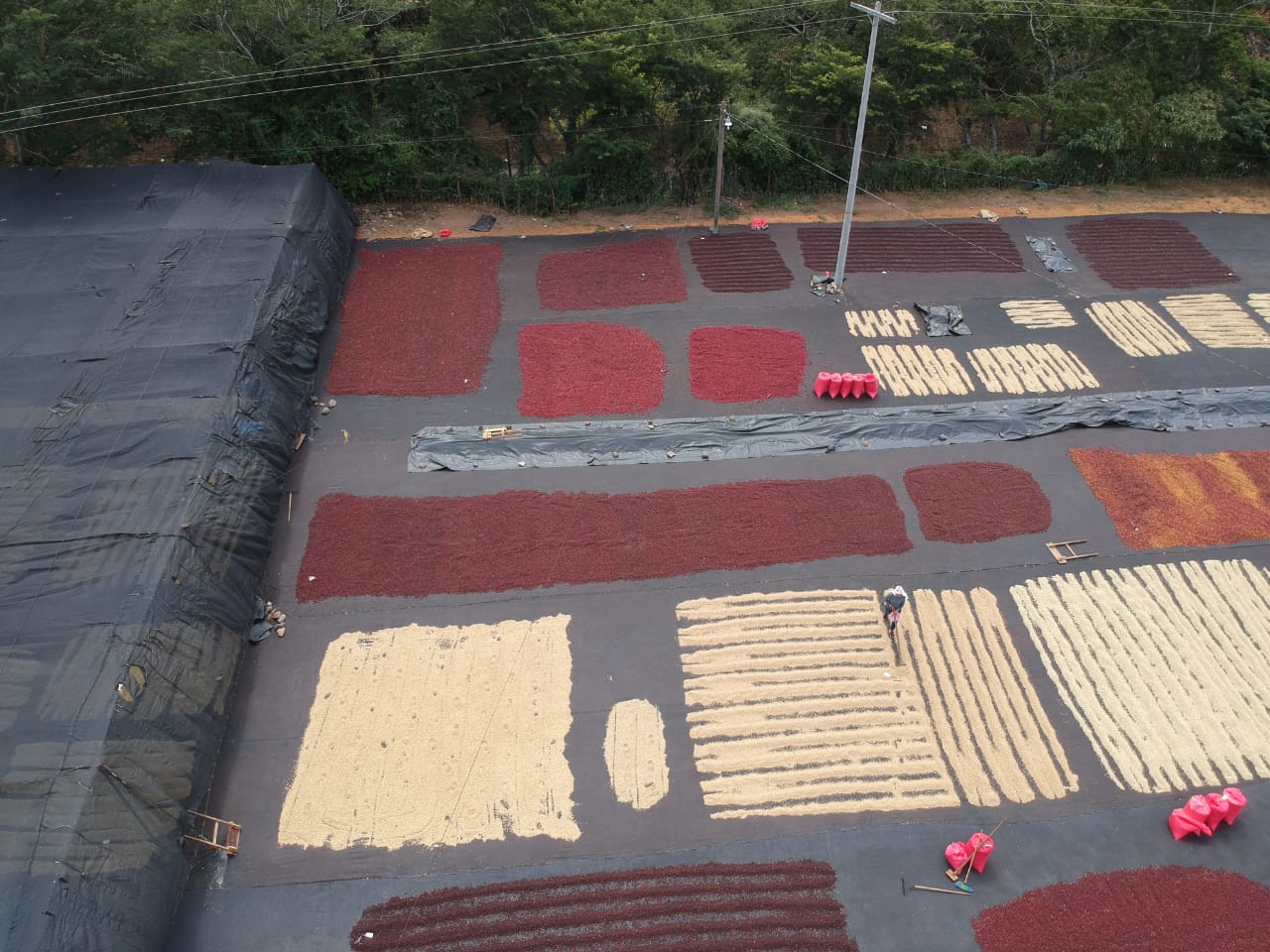Steampunk Coffee Roasters
Christmas Coffee: Nicaragua Martha & Ana Albir
Christmas Coffee: Nicaragua Martha & Ana Albir
Couldn't load pickup availability
Region: Nueva Segovia
Altitude: 1200 - 1500 m.a.s.l.
Variety: Maracaturra
Processing: Washed
UK Arrival: August 2025
Tasting Notes: Unfolding with an acidity akin to ripe plums and a rich, creamy body, this Maracaturra marks Christmas at Steampunk with a velvety sweetness.
When Christmas comes around, the same question always comes up: What encapsulates a Christmas coffee? We asked far and wide with Ciaran, our barista, even running a survey with his loved ones to try and get to the bottom of it. Finally, we came to a conclusion - Christmas is for celebrating our connections to the people in our lives. This lot does exactly that. Click here to see our roasters having a chat about this.
Producers
We sourced this coffee through our friend Laura at Minga, whose values align with ours precisely. Grown and processed by two sisters, Martha and Ana Albir, this coffee’s quality can be traced to not only its unique variety, but also to Martha and Ana’s dedication to quality. Their farms and drymill empower women through many key roles and showcase the work of familial ties.
In 2013 the Albir sisters inherited their father’s two farms, Finca Bethania and Finca Hortensias. Bethania is a 60-hectare farm between 1,200 to 1,500 masl, and Las Hortensias is a 9-hectare farm at 1,300 masl. Before 2013 the farms were mostly planted with Catimor, which was chosen for its high yields. The sisters shifted the focus toward quality and gradually replanted with varieties like Catuai, Parainema, Maracaturra, Gesha and Java and the work paid off. Las Hortensias secured 13th place at Cup Of Excellence Nicaragua 2025, scoring 87.14 with a washed Red Catuai lot. The sisters have generally placed within the top 20 of Nicaraguan COE in the past decade.
Soon after inheriting their farms, Martha and Ana chose to build a mill and start an export business to process and sell their coffee, along with their relatives’ coffee. They named the business Cafetos de Segovia, after the region where it’s located. Martha explained that the decision was largely motivated by the opportunity to return home regularly and reconnect with their Nicaraguan roots.
Already well-versed in the European and US specialty coffee markets, they worked to create a place capable of meeting those high standards, constructing and purchasing what they needed to have the ability to manage export preparation and QC themselves. Each lot is dried and QC’d individually, which helps their quality team design well-structured blends and distinctive microlots. Today, the mill employs seven full-time local staff and up to 60 seasonal workers during the harvest.
Variety
This coffee marks our first ever experience of roasting the Maracaturra variety, which is a hybrid of Maragogype (a Typica mutation) and Caturra (a dwarf Bourbon mutation). It’s a naturally occurring hybrid that first appeared in Brazil in the late 1800’s. Today, it’s most common in Nicaragua. It’s distinctive for its enormous leaves and oversized bean and its high yield. When grown at elevations above 1,500 meters, it often delivers an exceptional cup profile with bright acidity and vibrant floral, juicy and tropical notes. It’s been gaining popularity in the coffee world as the industry is starting to recognise the quality potential of Nicaraguan coffee. The Albir sisters are a great example of protest to the expected mediocrity of Nicaraguan coffee.
Region
Located in northern Nicaragua near the Honduran border, Nueva Segovia is known for its rugged terrain and dramatic mountain landscapes, part of the Cordillera Central. With elevations reaching over 1,800 masl, the region enjoys a cooler climate than much of the country. Its combination of high altitude, volcanic soil and ideal weather conditions make it one of Nicaragua’s top regions for coffee production. Coffee farming in this region is typically small-scale and family-run. Nueva Segovia accounts for around 10% of Nicaragua’s coffee production—far less than Jinotega (50%) and Matagalpa (30%), where larger estates are more common. But lower volumes often translate to greater attention to detail: producers in Nueva Segovia tend to focus on high-quality, microlot-style coffees aimed at the specialty market. Like the Albir sisters, producers from Nueva Segovia consistently shine at the Cup of Excellence, with the region producing the vast majority of top-ranked coffees year after year—including 5 of the top 7 in 2025, all of the top 13 in 2024 and over 60% of finalists in multiple past editions. Last but not least, what we like the most about Nueva Segovia is the small-scale agroforestry farm model. Shade-grown coffee is the norm, often under native trees and with high biodiversity.
Exporter
This coffee comes to us from our friends at Minga, a Colombia-based importer. Laura, who spent a number of years working in Central America beforehand, was actually offered a role at the Albir sisters’ mill back in 2017/19, managing QC and establishing protocols to help secure their coffee positioning in the specialty market. She’s stayed in close contact since. Keep an eye out for our upcoming Importer Series on the blog, where we will go into more depth about our relationship with Laura and her perspective on the current specialty coffee climate.
A note about packaging
Our coffee comes packaged in beautiful and hard-wearing tins. It is important to keep those beans away from air and light (see our blog post about coffee storage) and we think tins are the very best way of keeping those guys fresh.
Tins can of course be easily recycled (with other metals) but the very best and most environmentally conscious thing to do with them is to refill them. Find out how to refill or dispose of your Steampunk packaging HERE.
Share




















